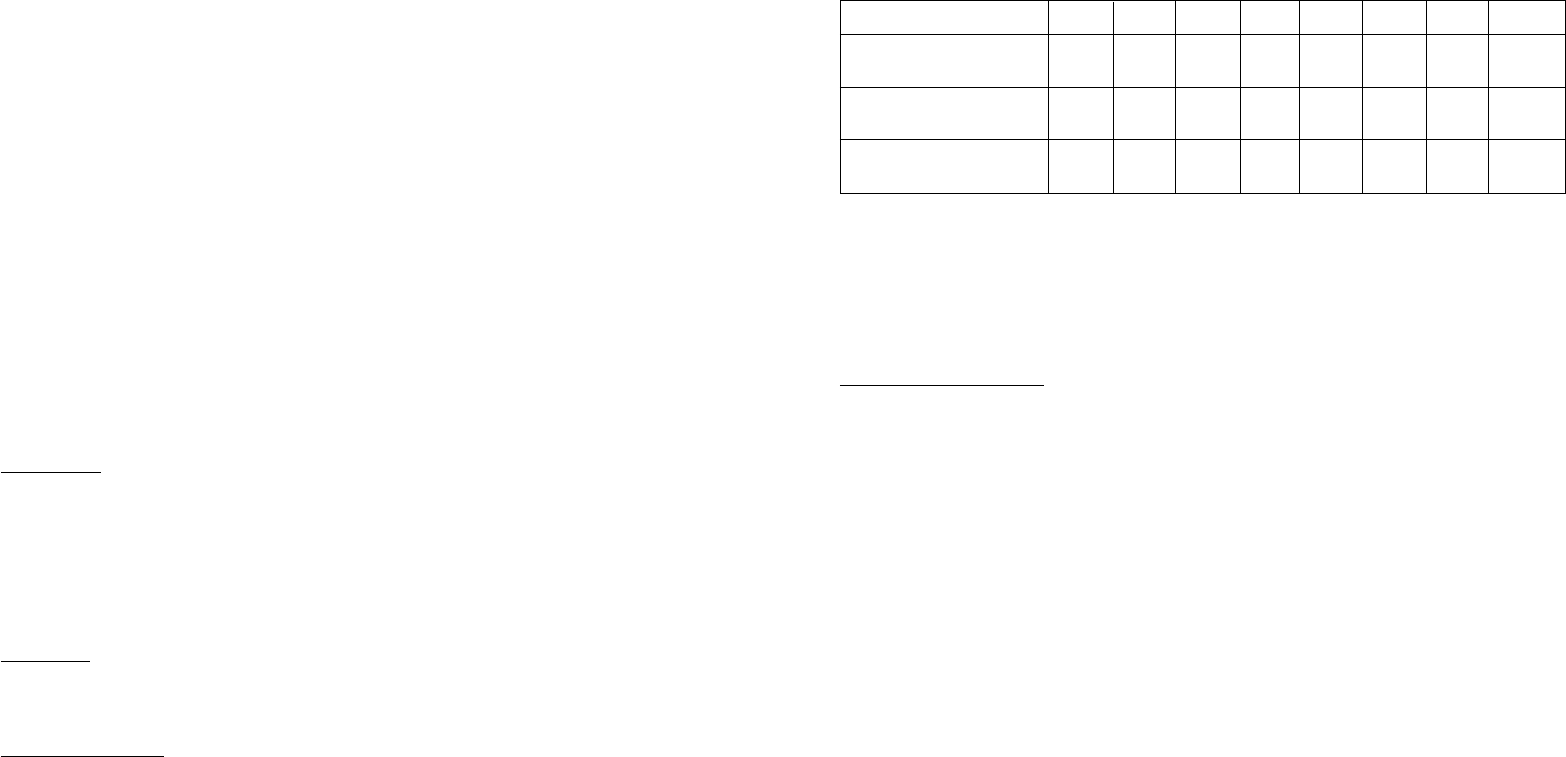
3
FREQUENCY 63 125 250 500 1K 2K 4K 8K
MEAN 9.9 9.9 13.9 18.1 24.0 25.2 39.7 27.4
ATTENUATION
STANDARD 3.6 3.7 2.9 4.8 2.8 3.7 3.6 6.9
DEVIATION
ASSUMED 6.4 6.2 11.1 13.3 21.2 21.4 36.1 20.5
PROTECTION
H = 26dB M = 19dB L =14dB SNR = 22dB
Complete Unit Conforms to PAS 016
Flow rates of 160-180 litres a minute (depends on battery and filter status) minimum designed flow
rate of 130l/min.
Motors are extremely quiet - generating a maximum of 65dB. Guaranteed for two years.
Warning/Attention
Examination and function test of the helmet should be made weekly.
A thorough visual examination of all parts of the helmet should be made. Any defects should be
remedied before further use.
Any helmet with visible damage e.g. a cracked or pierced shell should be replaced.
This helmet is made to absorb the energy of a blow by partial destruction or damage to the shell and
the harness or protective padding, and even though such damage may not be readily apparent, any
helmet subjected to severe impact should be replaced.
Any helmet which is two years beyond its manufacturing date should be replaced.
This helmet should not be modified in any way.
In the power off state this helmet will offer no respiratory protection and there may be an immediate
build up of carbon dioxide - this is to be considered an abnormal situation.
At very high work rates the pressure in the device may become negative at peak inhalation flow.
At very high wind velocities it is possible that the respiratory protection may not be at its optimum
potential.
This device is only to be used in atmospheres with normal oxygen content.
Only use intrinsically safe products in explosive atmospheres.
The Max helmets must not be used in areas with concentrations of gases and vapours above the
OEL (Occupational Exposure Limit) as defined in National Standards or areas with dust
concentrations requiring a protection factor of more than that detailed on page 1.
Manufacturer’s minimum design duration is 8 hours. Typical battery duration exceeds this and
depends on model used. See technical specification on pages 2-3.
Ear Protection Meets acoustic performance of EN352-3
Attenuation data Mean attenuation and standard deviation as measured in
BS EN 24869-1:
10
Face Seal
If the visor face seal becomes torn or damaged in any way you must immediately replace the
face seal assembly. To fit, follow the instructions given for the P1 visor. For P2 face seal
replacement, remove the black stud on either side by griping the face seal behind the stud
and pulling away to de-snap. Carefully peel away the face seal from the visor to detach
Velcro. Fit your new face seal by placing evenly onto visor Velcro and pressing down to
ensure a seal is obtained on the visor. Attach each side of the face seal to the ear defender
surround by inserting the black stud through the face seal hole and snapping the stud into
the hole provided (either side) below the top white stud.
Sweatband
To remove
Lift the sweatband off the retaining pips by stretching until it becomes free.
To replace
Gently stretch the sweatband over the retaining pips, locating the pips through holes in the
sweatband and taking care not to damage the material. Ensure that the new sweatband is securely in
place.
Chinstrap
To remove
With the ear defenders retracted gently pull one end of the chinstrap until it becomes free. Repeat for
the other end.
To replace
With the ear defenders retracted, holding bracket on end of chinstrap push retainer pip through hole
underneath face seal on strongring, snap into place. Repeat for the other end.
Cleaning
The helmet and all it’s parts should only be cleaned with warm water and a soft cloth.
Do not use organic solvents.
Do not attempt to clean the filter, replace on a weekly basis.
Do not immerse in water.
Do not apply paints, solvents, adhesives or self adhesive labels to the helmet except those approved
by the manufacturer.
Only clean the product in safe areas.
Storage
Store in a clean dry place at an ambient temperature.
Maximum limits of storage (including filters) –5°C to +55°C. Relative humidity <90%.
Fault Location
In the event of a reduction of airflow, leave the polluted environment immediately and carry out the
following checks:
● The filter is clean, undamaged and fitted correctly
● The face seals are undamaged, fitted and are sealing correctly
● The battery is connected and is fully charged (substitution with a new battery may be It is possible that visors may transmit impacts to eye-wear enclosed by the visor.
necessary)
● Any helmet which exhibits visible damage should be replaced
● If the motors are not running send helmet back to your nearest agent or to the
manufacturer








